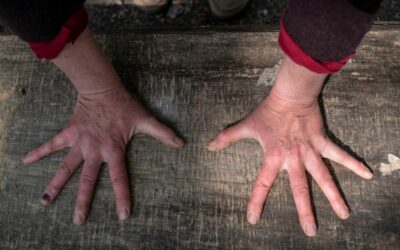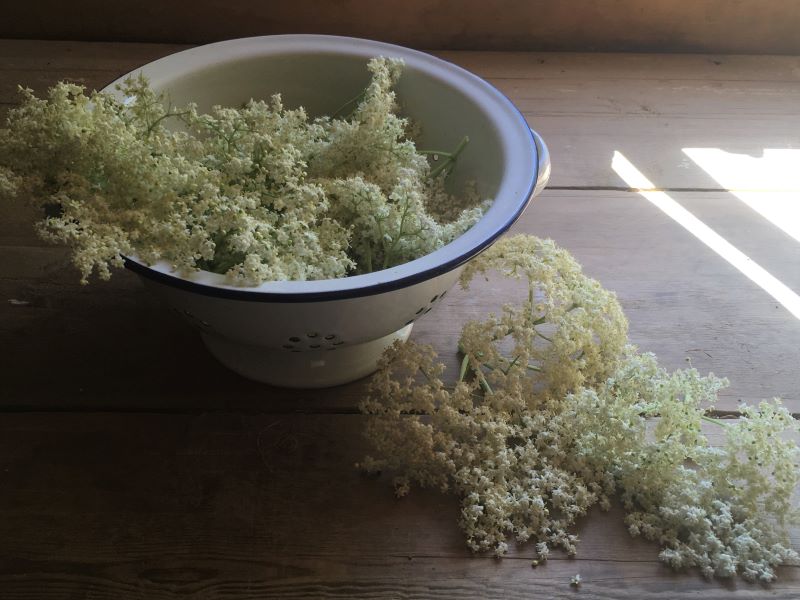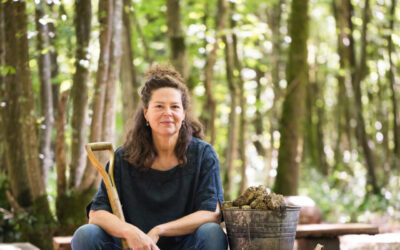One winter, the East Sussex Archaeology and Museums Partnership team, led by Christabel Shelley and Ian Dunford, constructed a beautiful dwelling, influenced by archaeological findings at Deer Park Farms in County Antrim, Ireland, an early rath (ringfort or settlement enclosure), which dates back as far as the Bronze Age.
Our build at Buchan Park, West Sussex, wasn’t a reconstruction, but was informed by Deer Park Farms as well as drawing on the team’s wealth of experience of building various pre-historic style dwellings. Our building materials were solely those would have been plentiful during that era in this part of the country: hazel, ash and reeds; and we extrapolated the building’s height and shape from the size, depth and angles of the post holes from the archaeological excavations in Ireland. Below is a series of photos from the build.
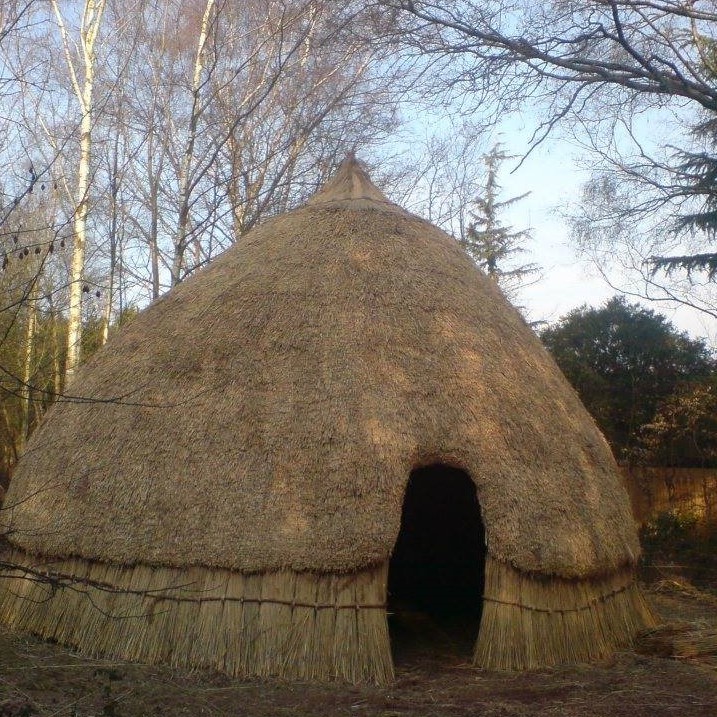
Our completed dwelling at Buchan Park, W Sussex
One of the striking things about the finds at Deer Park farms were the well preserved woven hazel panels of the dwellings. They were double walled buildings, with a 30cm gap between the walls for insulating material, woven with a high degree of technical skill. The main dwelling had a circular ‘backhouse’ joined to it so that the foot print of the whole was a figure of eight, and analysis shows that the two elements had been woven simultaneously.
The team also researched more contemporary indigenous structures with similar footprints / locally available plants. The Wichita people, from the plains areas now known as the states of Kansas, Oklahoma, and Texas, were an agriculturally based group who were often referred to as the “Grass-house People.” There are records of their large dwellings, which they thatched with grass.
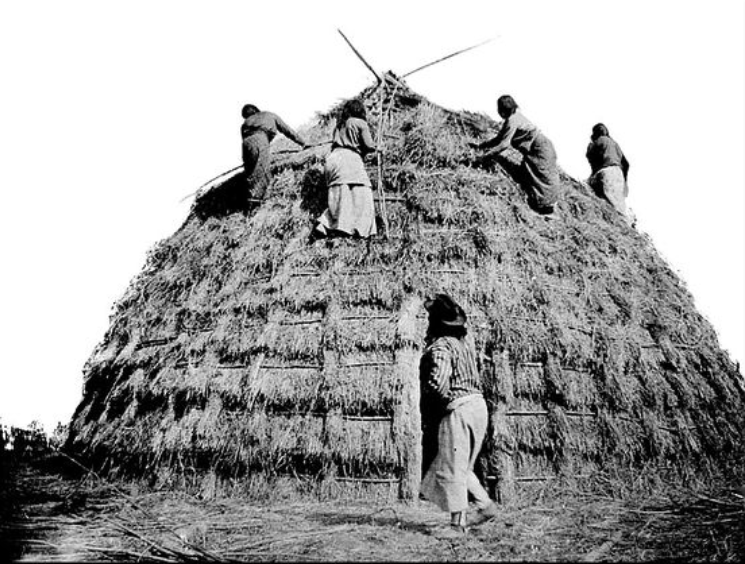
Wichita grass house, source: wiki commons
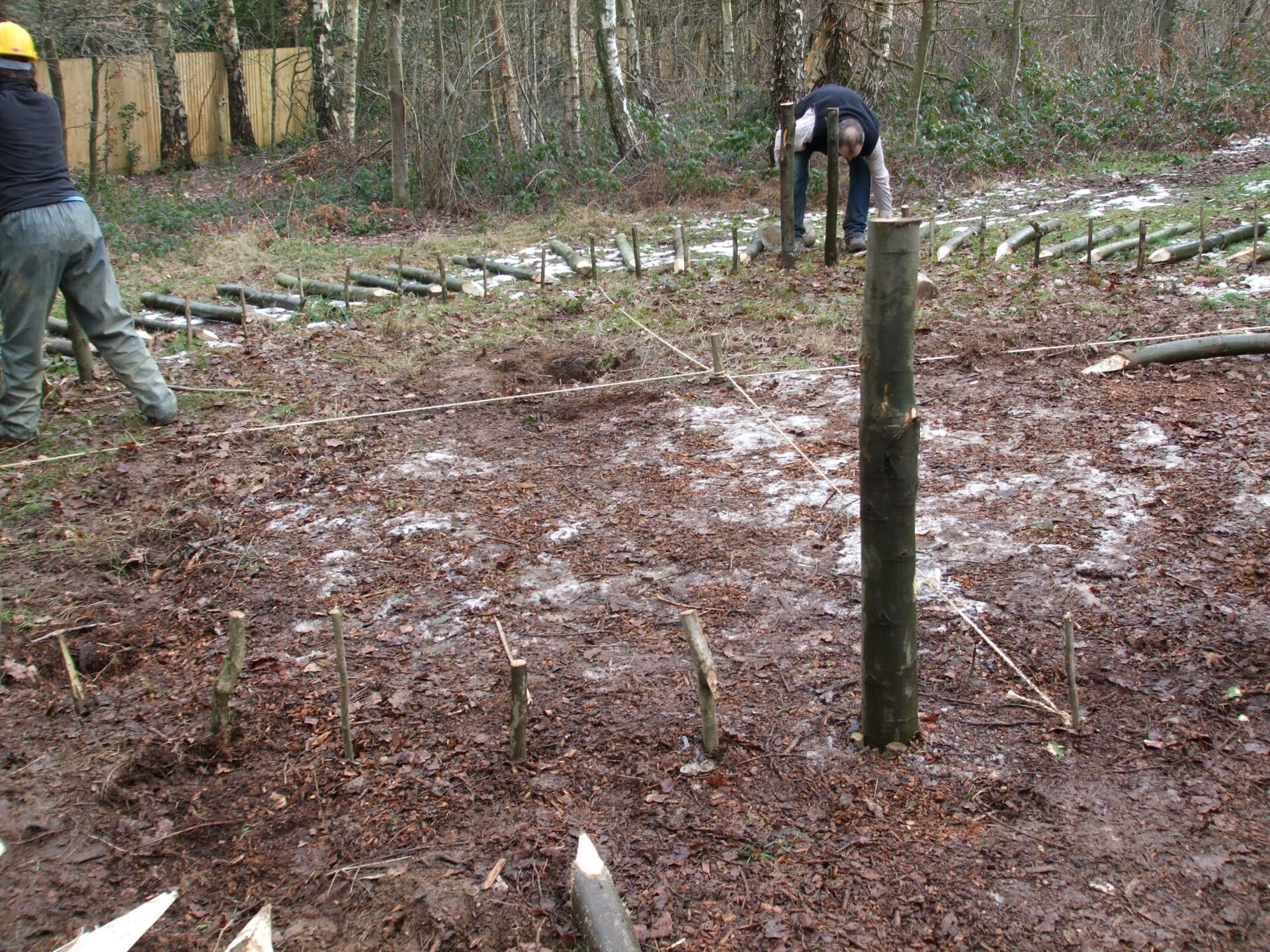
Starting the build: measuring out; sinking the first posts for the walls
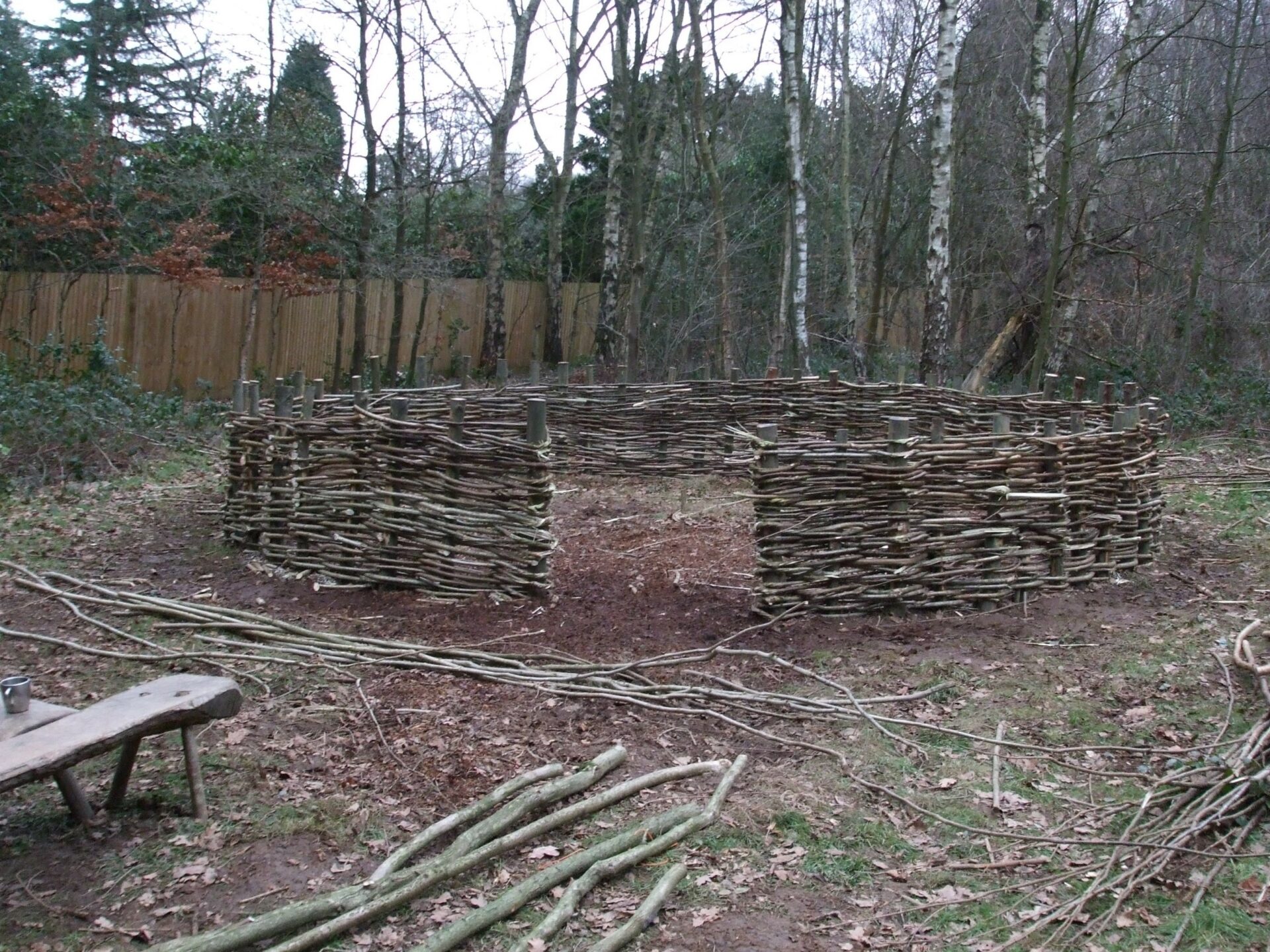
Completed walls, woven hazel rods
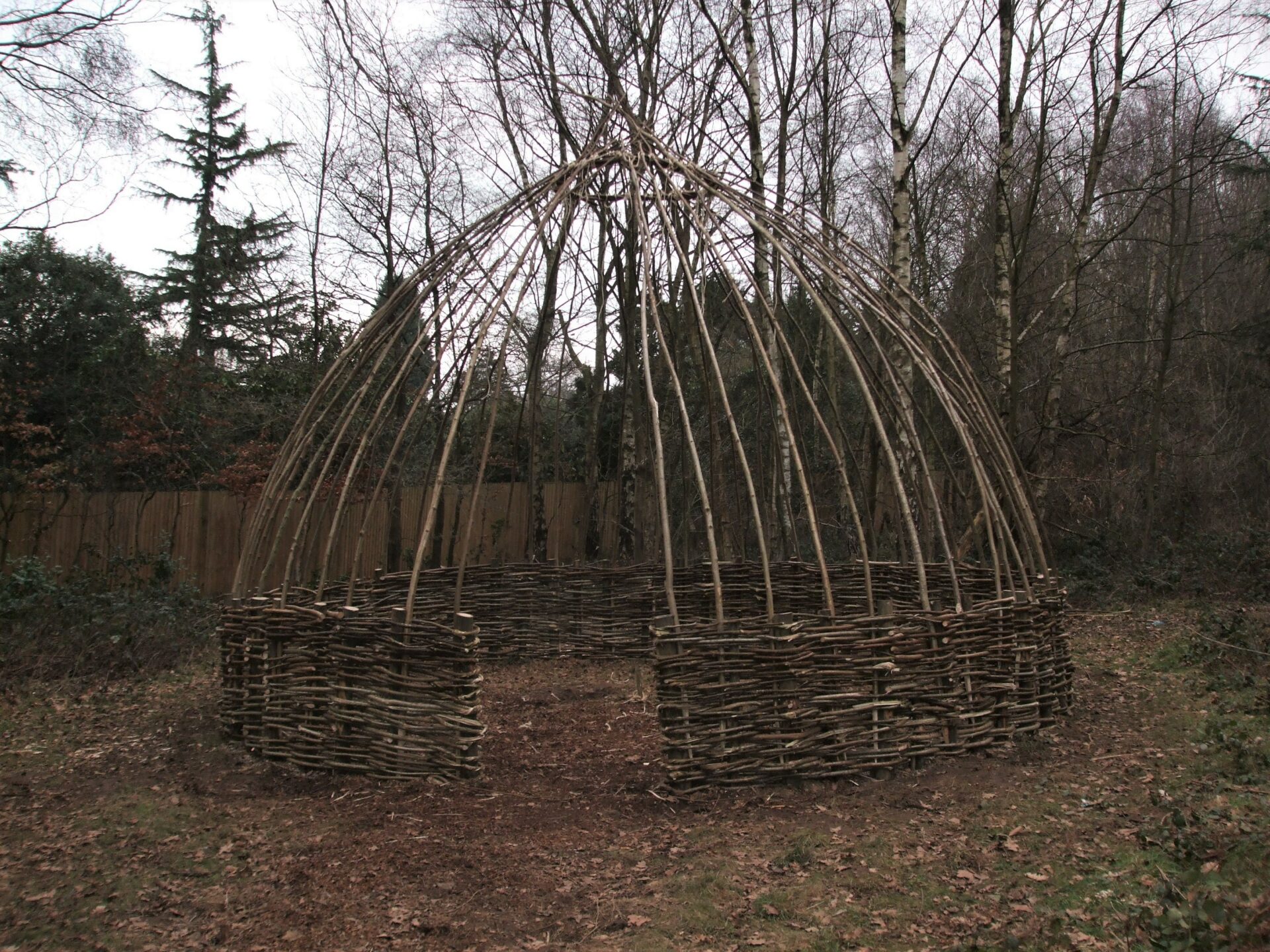
Ash roof poles in place, with a hazel ring at the top
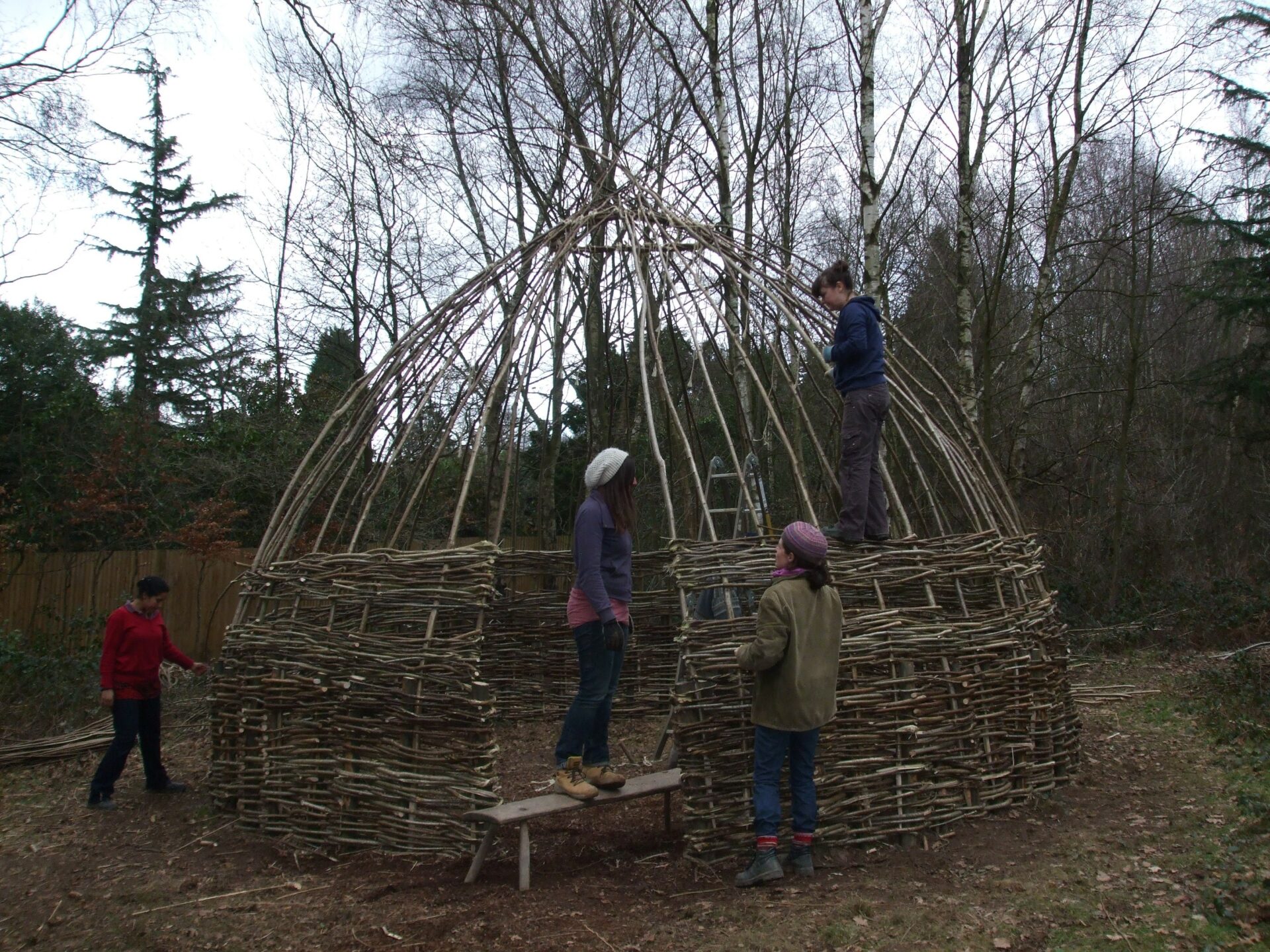
Weaving up the sides of the roof with hazel, a randing weave
This kind of technology that people used to build these sorts of dwellings, since early pre history, permeated every part of life. Weaving techniques using locally-available plants were used to make baskets that held babies, food, belongings. The same weaving was used to make boats and houses; nets were made to catch food, to carry, to secure shelter, to weave/construct clothing. We still talk about the warp and weft of life.
When this build was finished, being inside it was amazing- so peaceful and cosy; the instinctive comfort of being within a circular space; the smell of wood and reed, the evidence of the many hands that had worked together to build it.
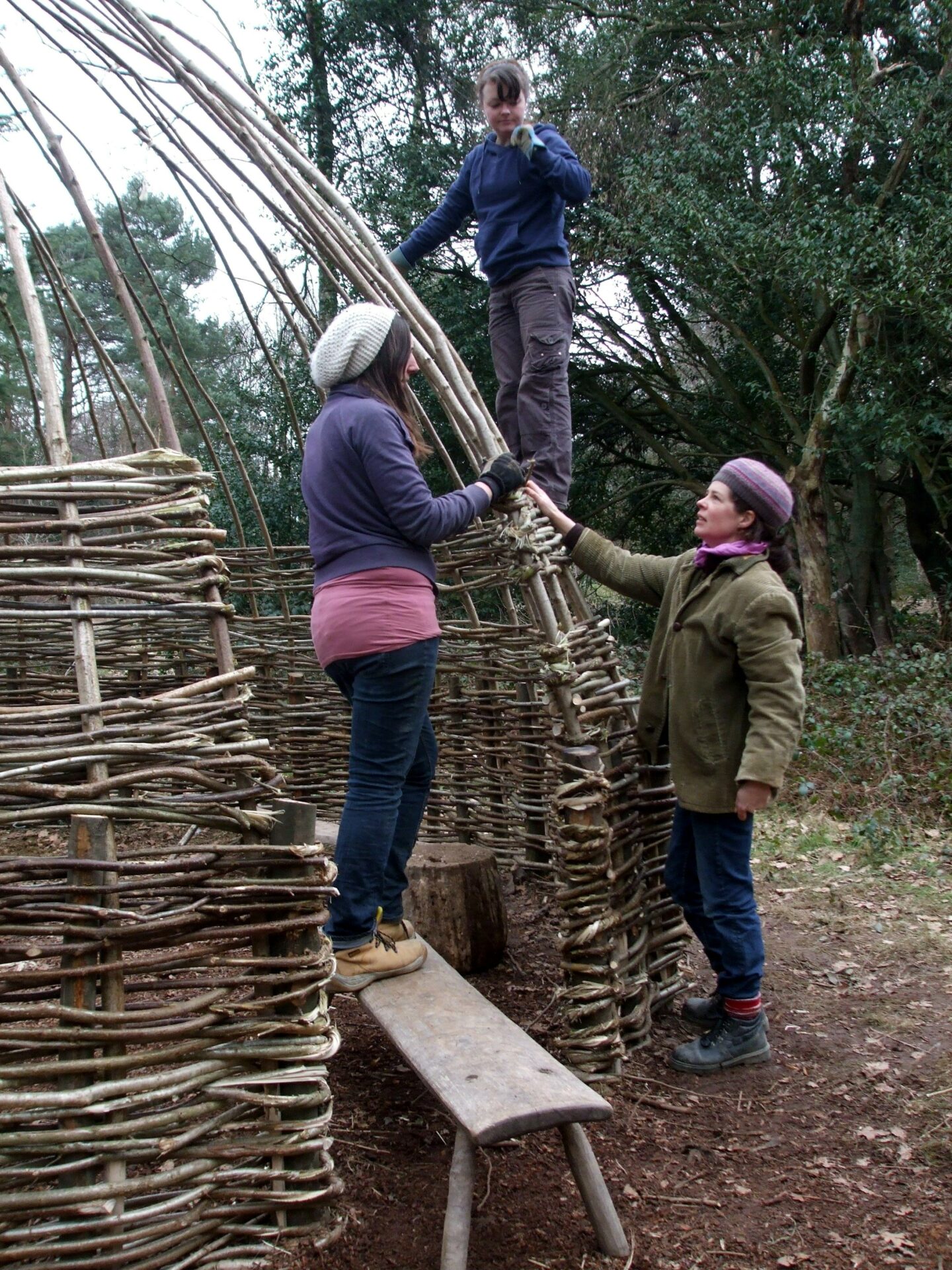
Technical discussions
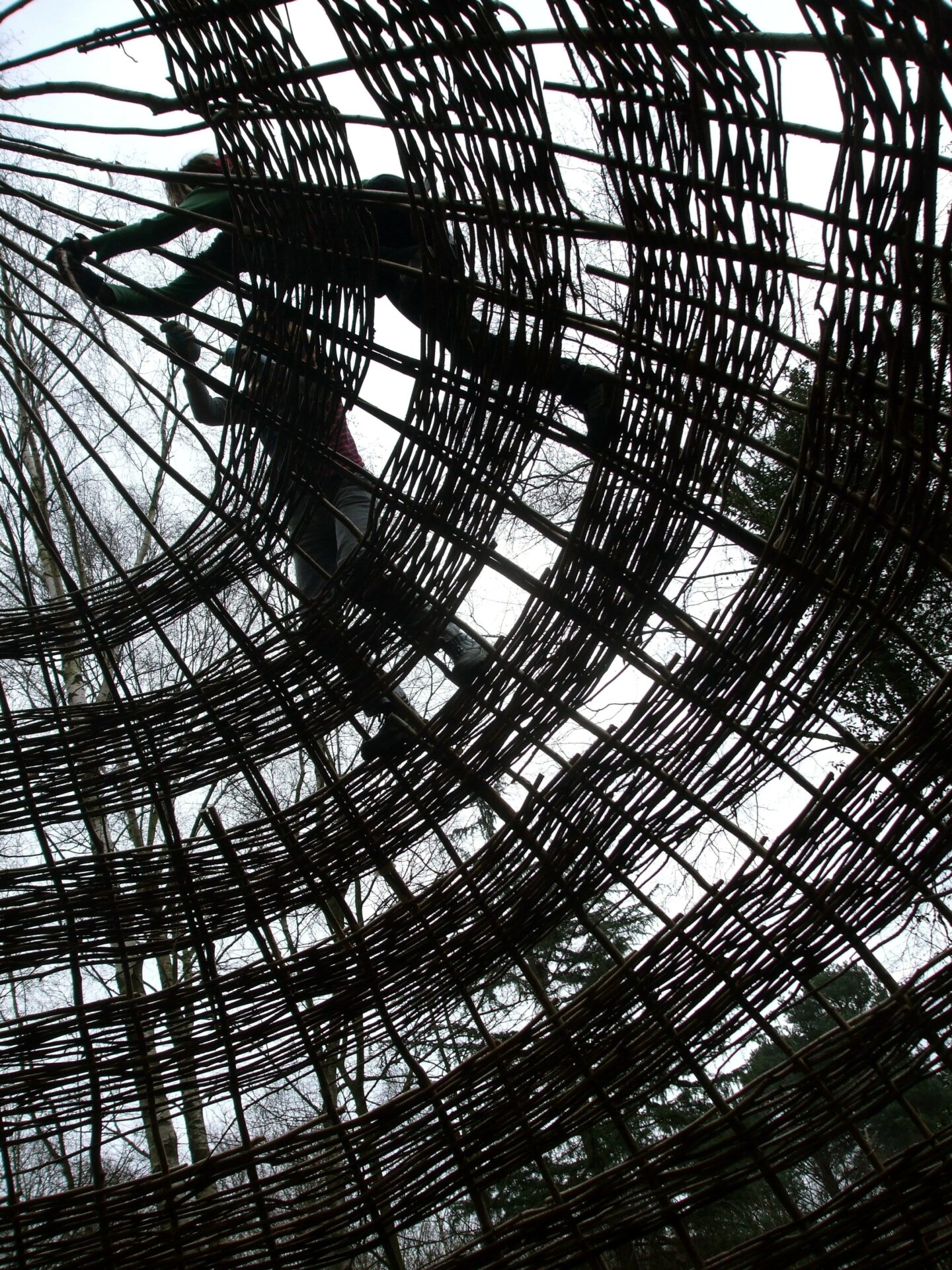
Weaving bands that correspond to where bundles of thatching reed will be secured
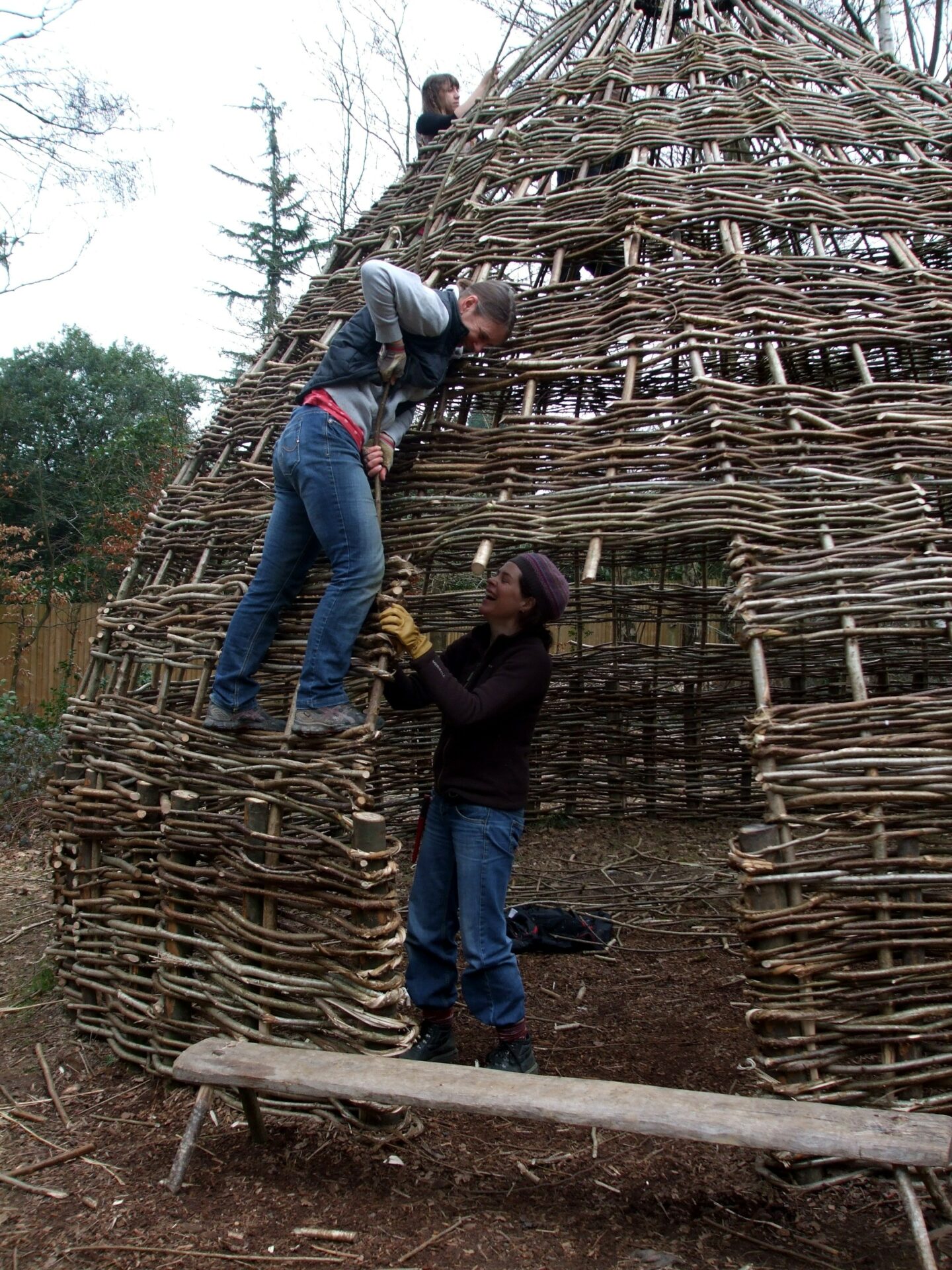
Sorting out doorway details
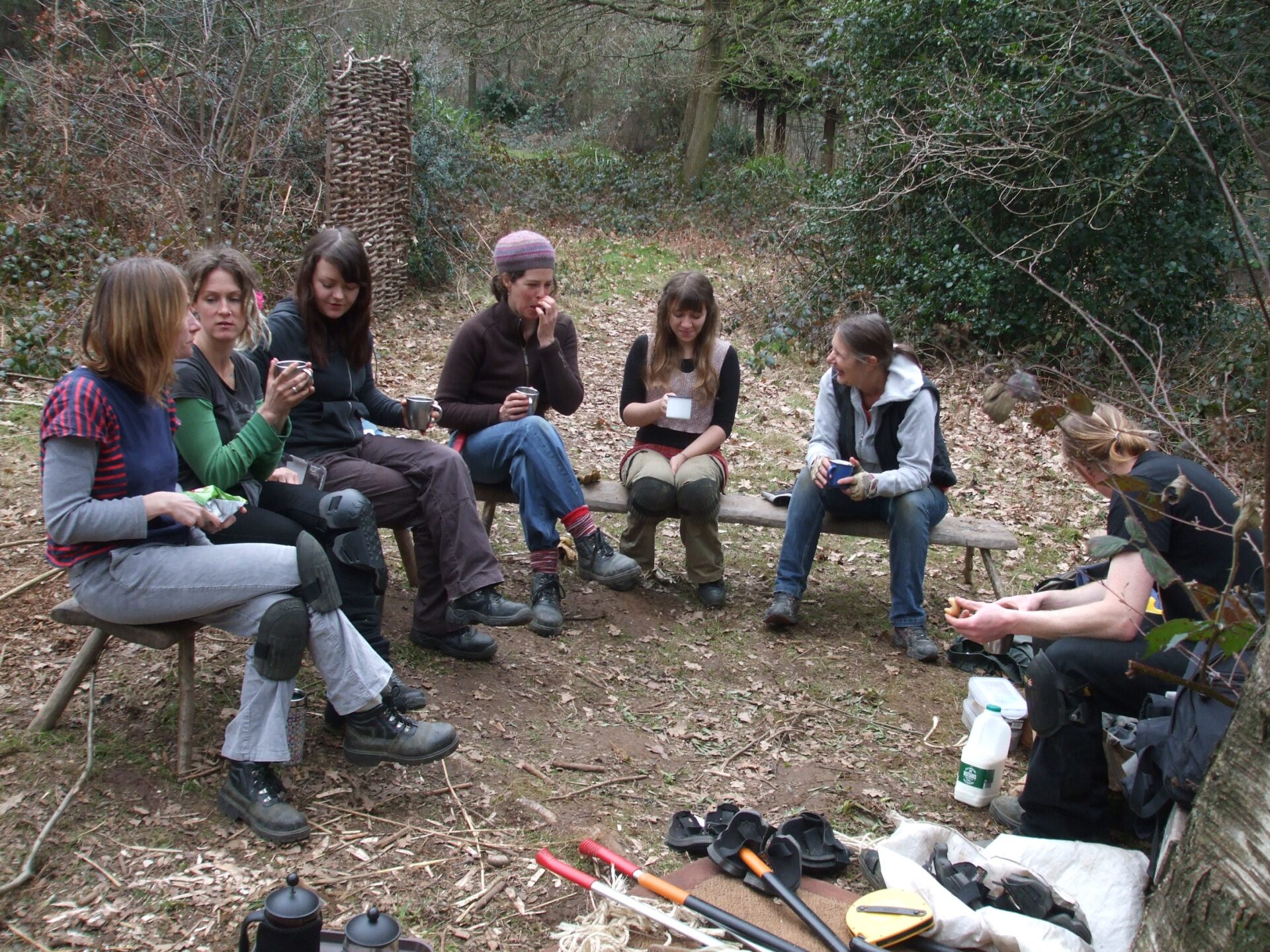
Some of the team
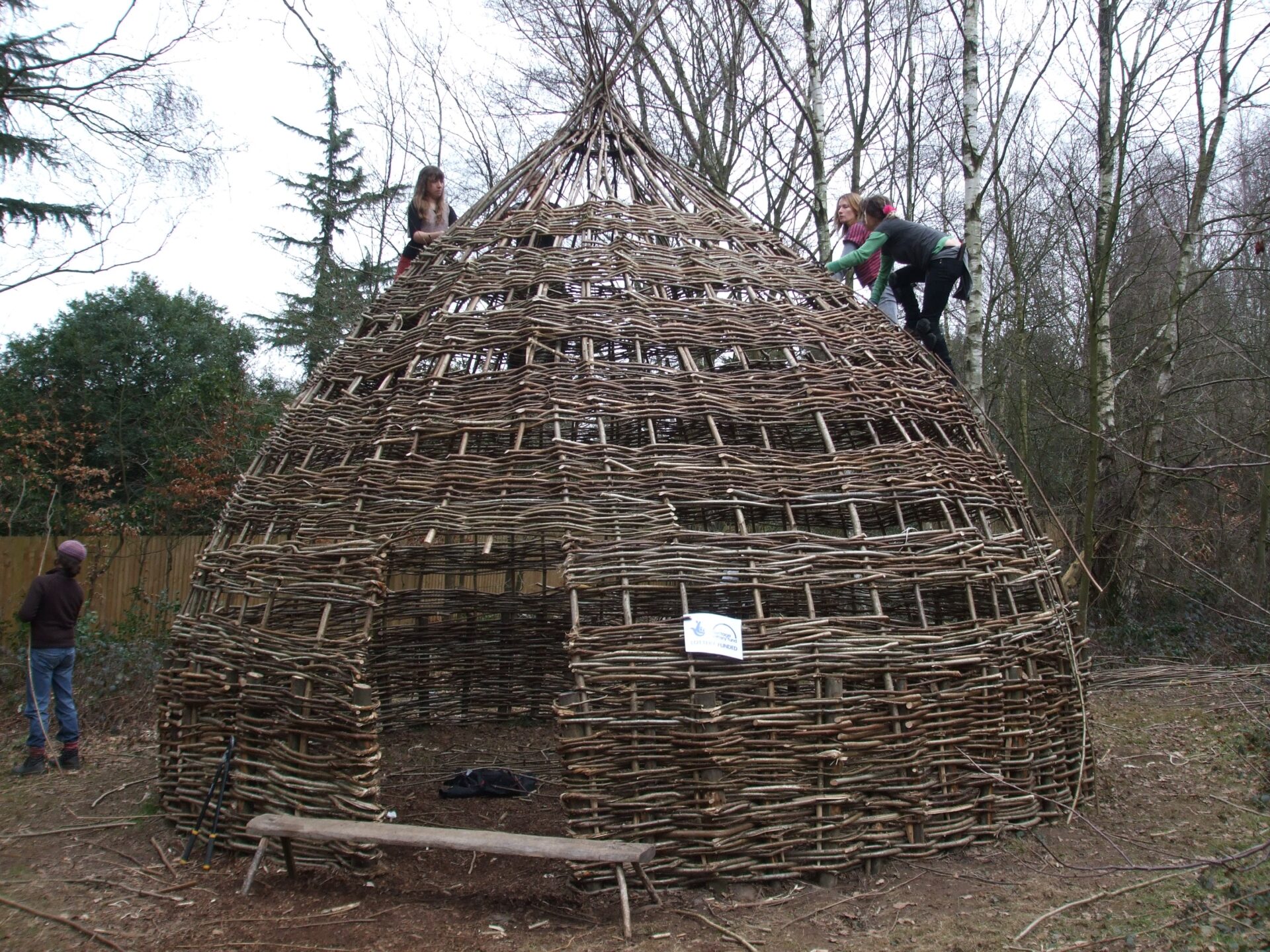
Nearing the top
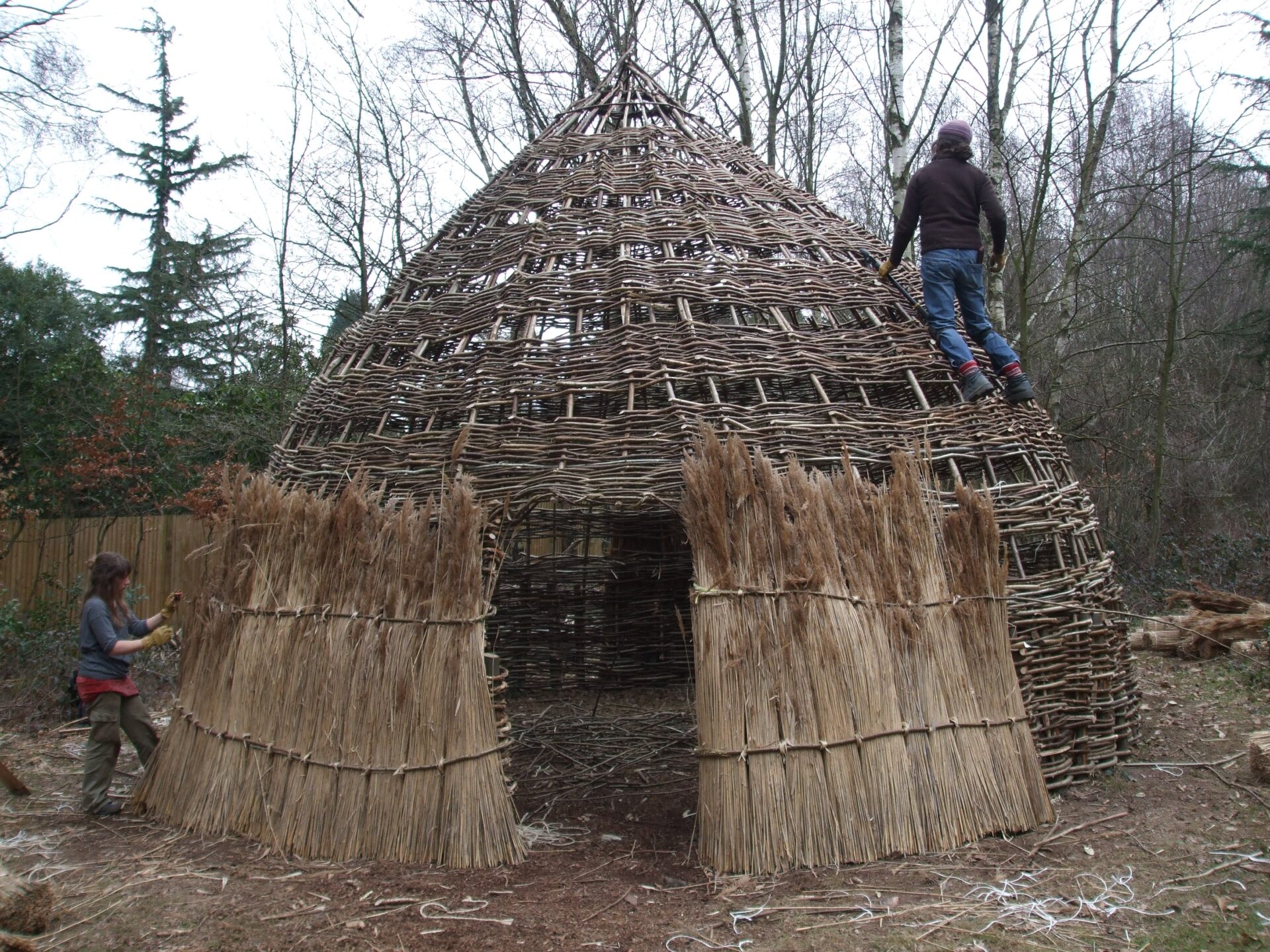
First course of reeds (Phragmites australis) for the walls, secured with horizontal hazel sways, fixed with hazel spars
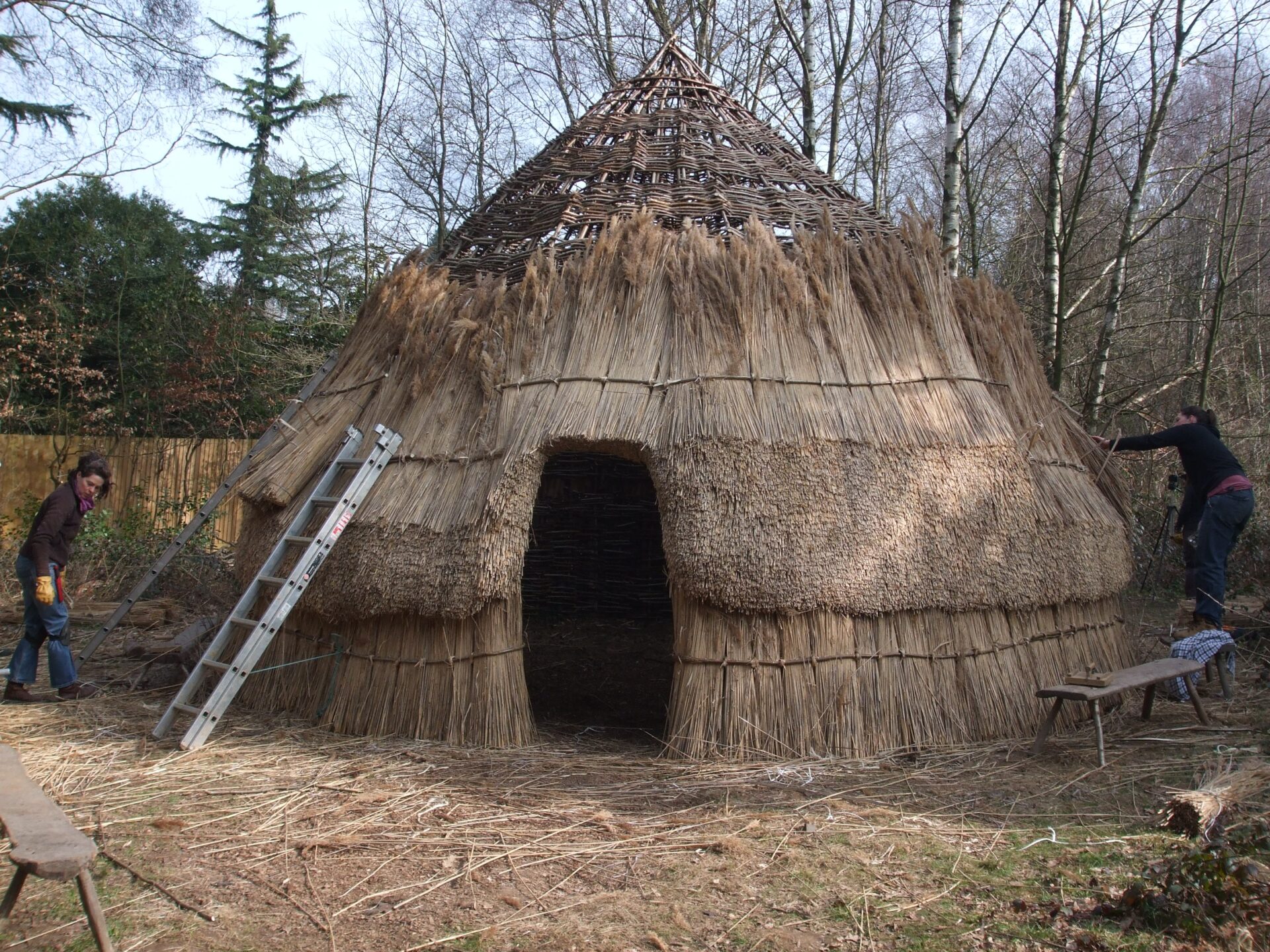
Thatching the roof; dressing the butt ends of each course of reeds to keep the roof pitch
Our team was made up of archaeologists, ancient technology experts, woodworkers, basketmakers and specialists in hides, textiles, food, metallurgy. Some were permanent employees, some trainees, some volunteers.
East Sussex Archaeology and Museums partnership, based at Anne of Cleeves House, Lewes, until 2018, built numerous prehistoric-style dwellings in various styles, in school grounds and other locations throughout Sussex. The team delivered countless hands-on prehistory learning experiences to schools, colleges, universities, community groups and at public events. When governmental and Heritage Lottery funding ran out, our team dispersed but many have continued in education, crafts and the heritage sector. It was a joy and a privilege to be part of the team.
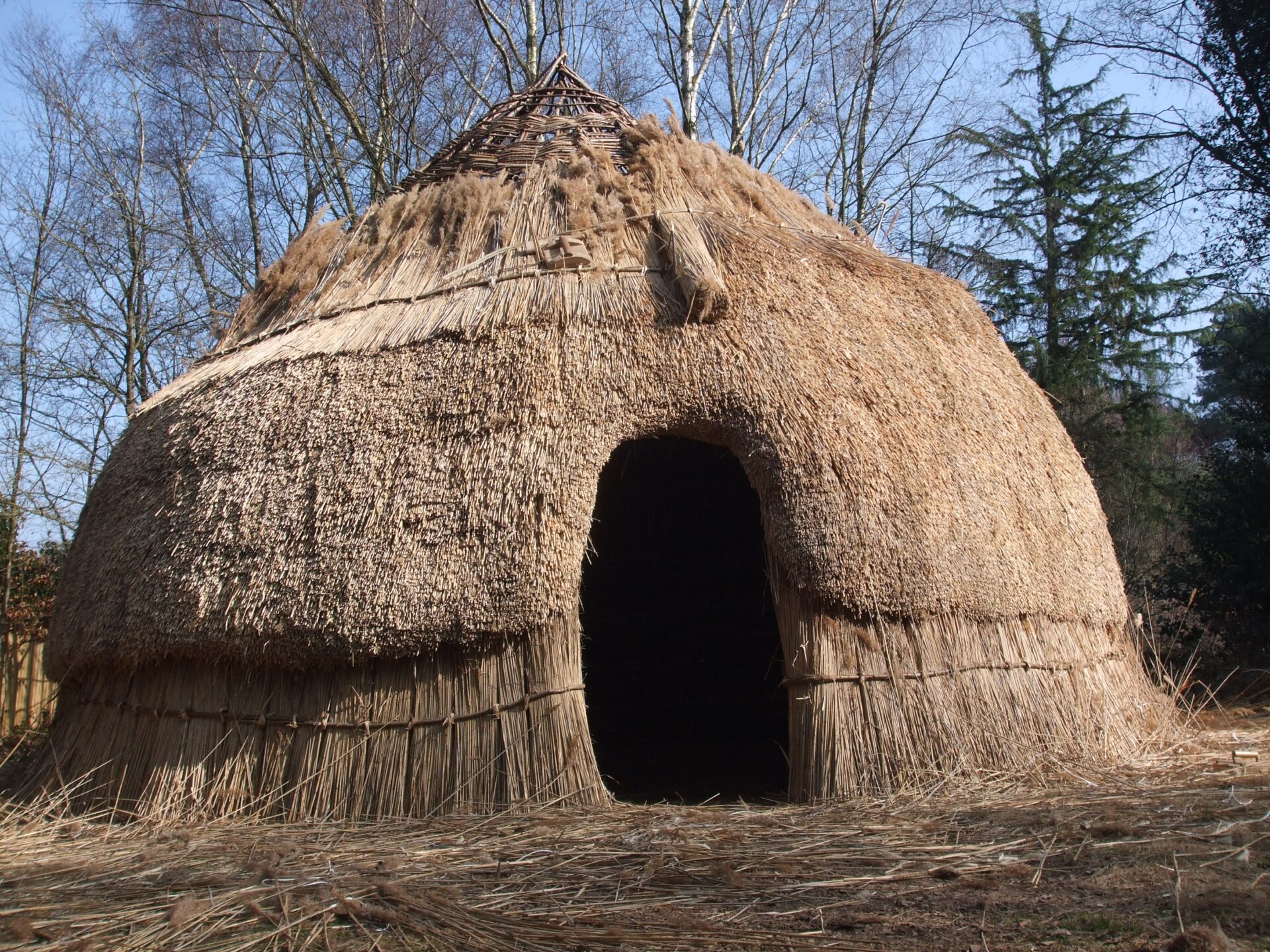
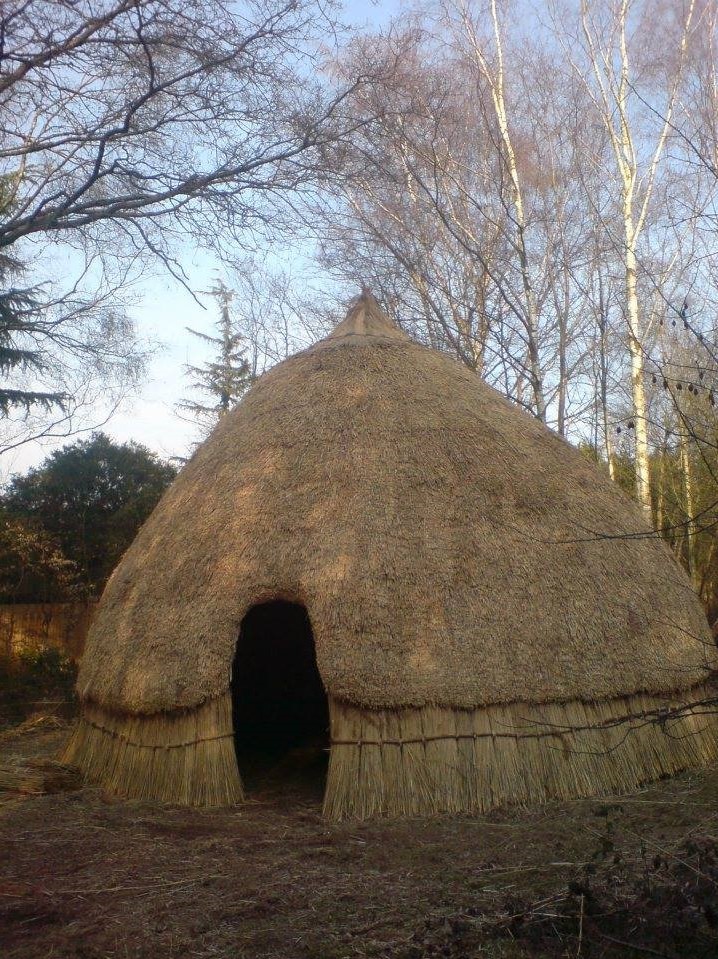
Thanks to Tristan Bareham for archaeological info and insights.
